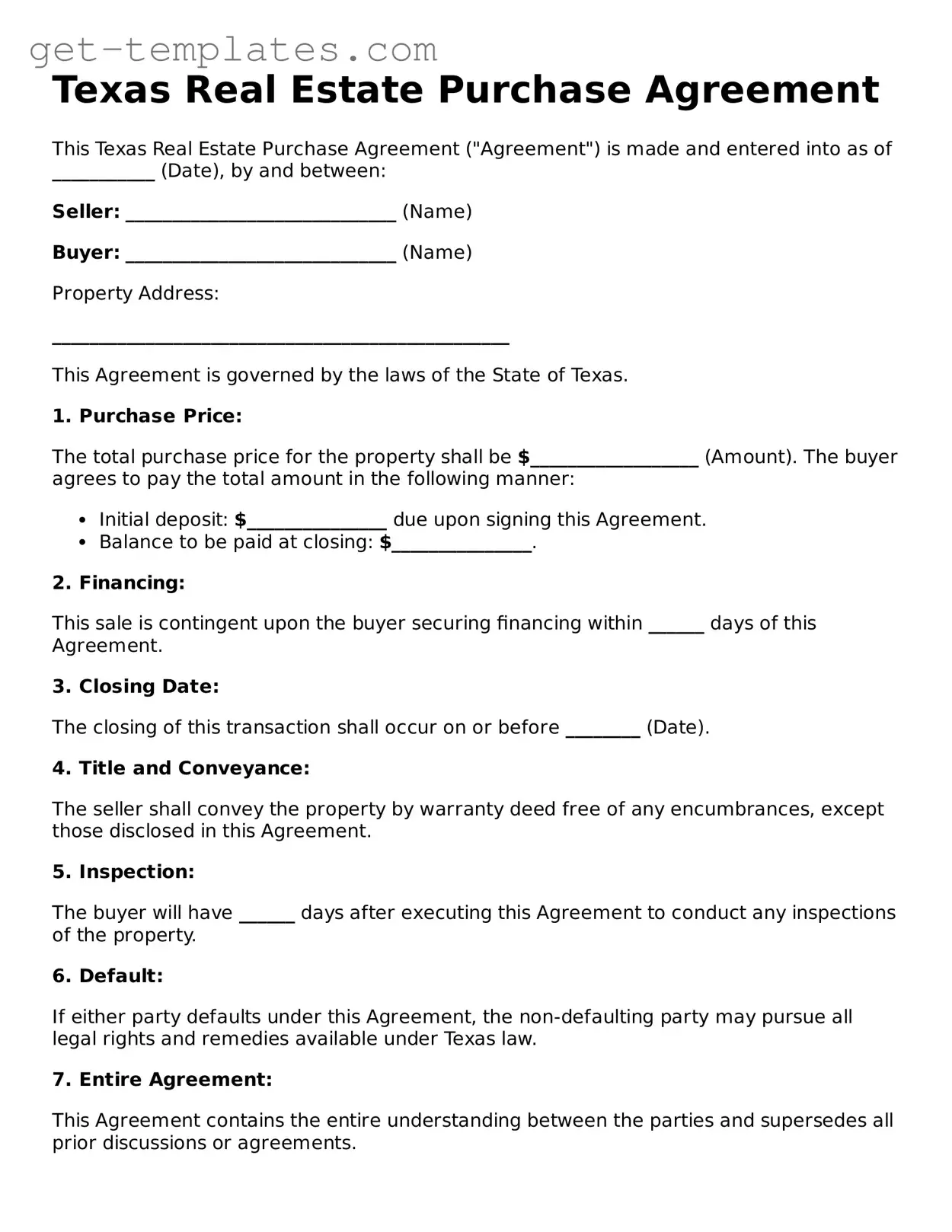Texas Real Estate Purchase Agreement
This Texas Real Estate Purchase Agreement ("Agreement") is made and entered into as of ___________ (Date), by and between:
Seller: _____________________________ (Name)
Buyer: _____________________________ (Name)
Property Address:
_________________________________________________
This Agreement is governed by the laws of the State of Texas.
1. Purchase Price:
The total purchase price for the property shall be $__________________ (Amount). The buyer agrees to pay the total amount in the following manner:
- Initial deposit: $_______________ due upon signing this Agreement.
- Balance to be paid at closing: $_______________.
2. Financing:
This sale is contingent upon the buyer securing financing within ______ days of this Agreement.
3. Closing Date:
The closing of this transaction shall occur on or before ________ (Date).
4. Title and Conveyance:
The seller shall convey the property by warranty deed free of any encumbrances, except those disclosed in this Agreement.
5. Inspection:
The buyer will have ______ days after executing this Agreement to conduct any inspections of the property.
6. Default:
If either party defaults under this Agreement, the non-defaulting party may pursue all legal rights and remedies available under Texas law.
7. Entire Agreement:
This Agreement contains the entire understanding between the parties and supersedes all prior discussions or agreements.
IN WITNESS WHEREOF, the parties have executed this Agreement as of the day and year first above written.
Seller's Signature: _______________________________
Date: _______________
Buyer's Signature: _______________________________
Date: _______________
